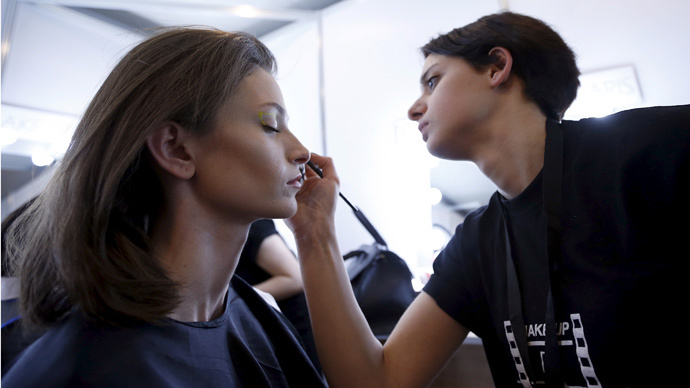French cosmetics giant to 3D-print human skin

No more testing products on real skin, cosmetics giant L’Oreal says. The French company has announced plans to 3D-print human skin for all its toxicity and irritability tests. It is the fruit of a partnership with a bio-printing startup.
The company has already been making huge strides in the field of testing technology since the 1980s. According to Bloomberg, in Lyon, the company runs factory-sized facilities dedicated expressly to this field. The difference is it’s been using real skin tissue donated by plastic surgery patients, grown into test samples.
And its 60 lab workers make more than 100,000 skin samples a year – roughly 5 square meters (54 sq ft). They come in varying thicknesses – the densest being about 1mm thick – but none are bigger than a square from grid in a school notebook.
It takes several steps before the tissue is grown into skin. It starts with tiny slices, which are then fed special nutrients, before further biological processing. And it’s not just one type of skin, but nine. The samples cover several age groups and ethnic backgrounds.
"We create an environment that's as close as possible to being inside someone's body," L’Oreal Global Vice President of Research Guive Balooch says, according to Bloomberg.
It’s a business alright: only about half the skin produced is used, while the rest is sold to pharmaceutical companies and other cosmetics rivals. A standard 0.5 sq cm slice was last known to cost about €60 (US$70.62), although that’s the 2011 price. It was the most recent that Bloomberg could get L’Oreal to divulge.
But a fresh partnership, and the first of its kind, promises to leave the cumbersome process of skin-synthesis behind and replace it with all-out 3D printing. And why not – humanity in the last couple of years has announced plans to print a bigger variety of living organs than we could have imagined just a little while ago.
READ MORE: Wi-Fi EYE: Scientists developing 3D-printed eyeballs with filters & camera
But with San Diego-based startup Organovo, L’Oreal beats others to the punch to become “the first beauty company” to strike the sort of partnership, according to Balooch. This promises to expedite the process of skin creation and automate it within the next five years.
With L’Oreal opening up a new lab in California, research will be shared by the two companies.
Although Organovo is already known for taking part in printing kidney tissue, L’Oreal is no lightweight in R&D either, spending twice as much of its revenue (about 3.7 percent) annually than is common in the industry, according to research carried out by Bloomberg. That figure amounts to about $1 billion.
The company aspires for a firm first in cosmetics innovations, grabbing exclusive rights to 3D-printed skin it plans to produce with Organovo for the purposes of skincare. As for the startup, it’ll get exclusive rights to the technology and samples to be used in prescription drugs toxicity testing and medical tissue-related applications.












